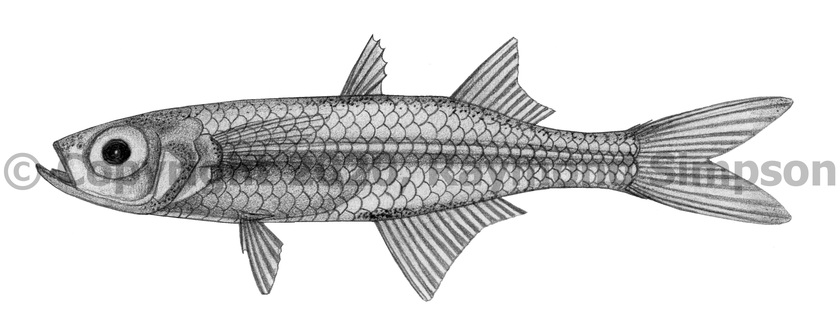
Common Name
Cuban Silverside
Year Described
Eigenmann, 1903
Identification
Dorsal Fin: V; I, 8-10
Anal Fin: I, 12-14
Scales: 32
Gill Rakers: <21
Body elongated and tapering posteriorly. Head with terminal mouth just reaches anterior margin of orbit. Mouth not protractile. Premaxilla thin with distal end not expanded. Post-maxillary process present. Teeth small. Eye large (longer than snout)). There are two dorsal fins; one spiny and one with mostly soft rays. Dorsal and anal fins with concave edges. Pelvic fin origin well behind pectoral fin base. Anal fin origin in front of second dorsal origin. Pectoral fin high on mid-body. Caudal fin forked. Body scales cycloid. Area of throat, pelvic fin base, and pectoral fin base scaleless. Bases on anal and dorsal fins not scaled.
Color
Body translucent with a yellowish to golden tinge on dorsal midline, internal organs, backbone, and median fins. Silvery lateral stripe very narrow (1-2 scale widths). A dense peppering of black melanophores on dorsal midline, backbone, and base of anal fin.
Size
Adults commonly to 35mm, but can reach 50-62mm at largest.
Habitat
Fresh and brackish waters but much more common in freshwater. In saltwater found mostly in mangrove swamps and calm estuaries.
Range
Endemic to Cuba.
References
Chernoff, B. 2002. Atherinidae (pp 1086-1089). In: Carpenter. 2002. The living marine resources of the Western Central Atlantic. Vol. 2: Bony fishes part 1 (Acipenseridae-Grammatidae). FAO Species Identification Guides for Fisheries Purposes. American Society of Ichthyologists and Herpetologists Special Publication No. 5.